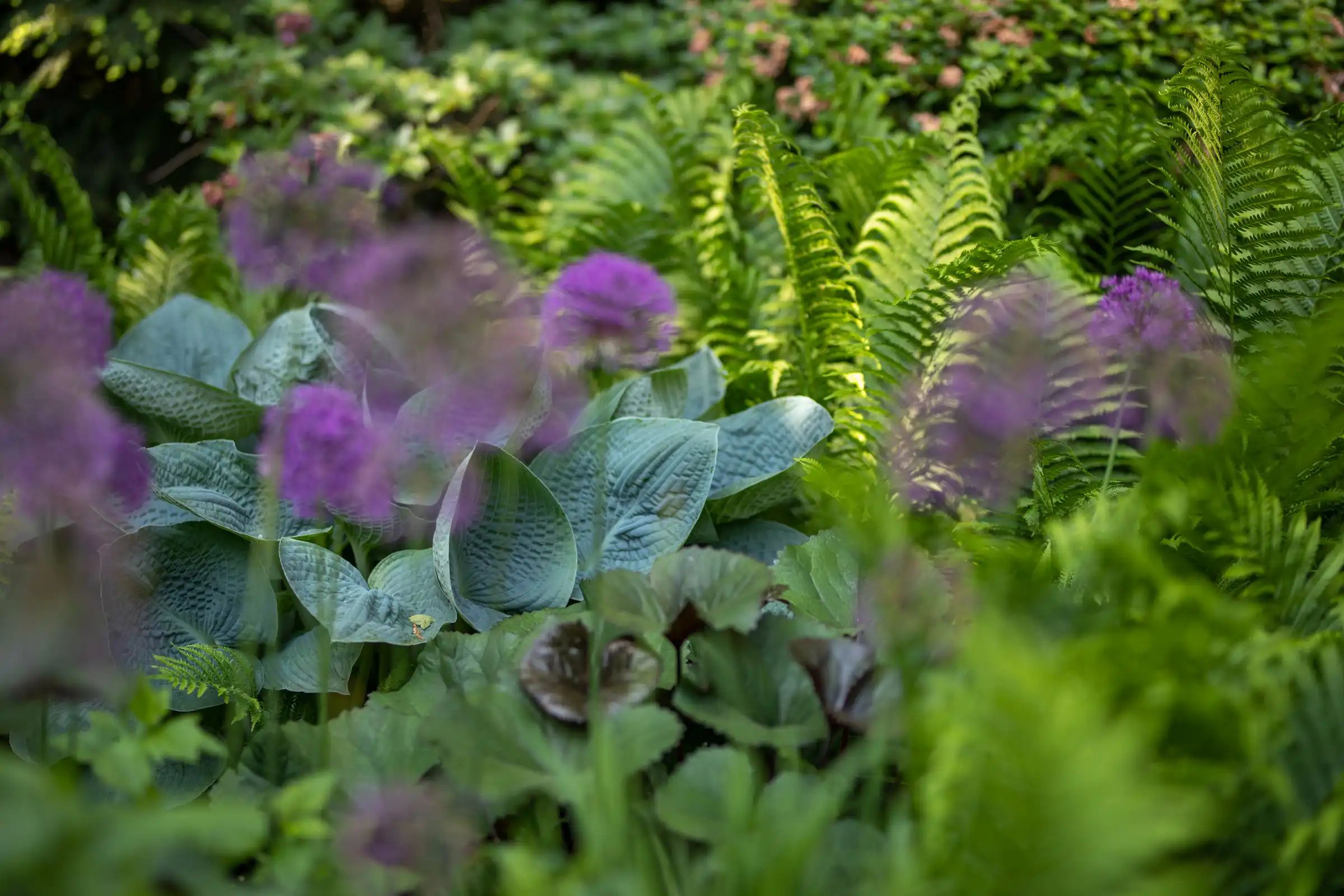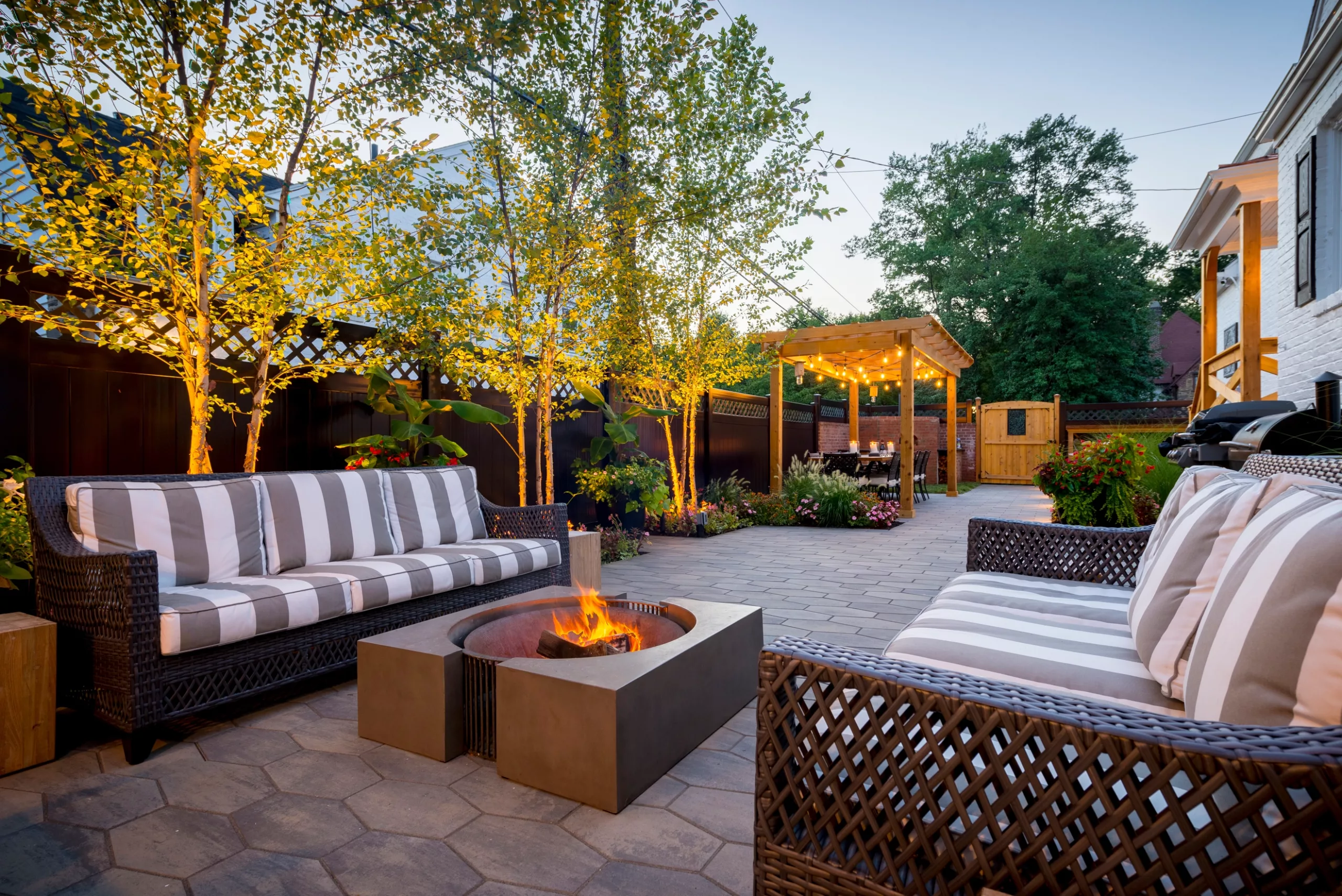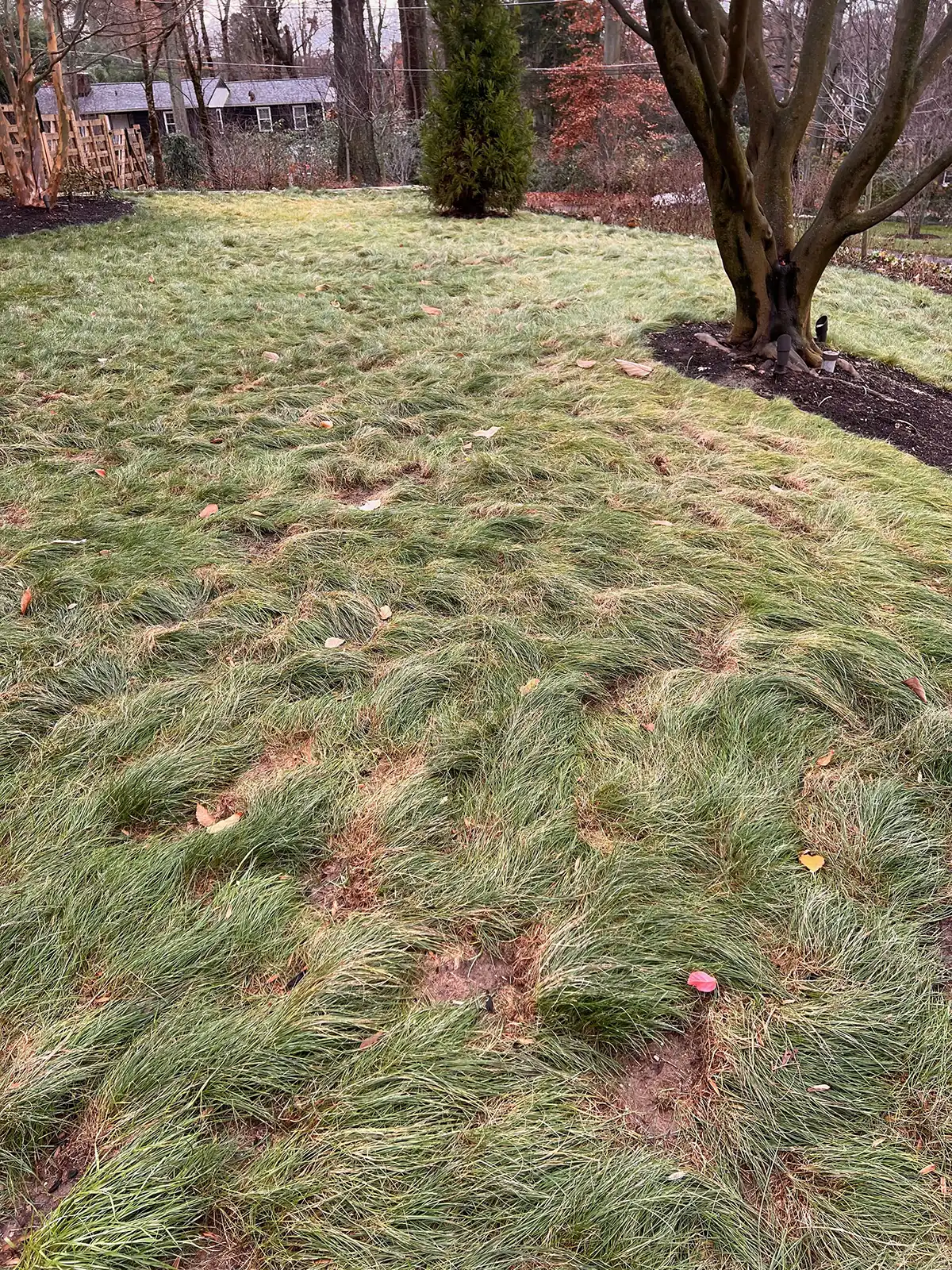As children, many of us made fine memories climbing and playing around the trees of our childhood home. But as time progressed, the needs of development and the ravages of weather have taken their toll on many trees on many Main Line properties, forcing many homeowners to part with the trees which were once such an integral part of their landscapes. IBIS World, a market research analytics provider, estimates that the tree trimming and removal industry has grown by 4.6% annually since 2011, growing to become a $17 billion industry.
But as yards have fewer and fewer mature trees, homeowners have become more interested in finding ways to add new ones. Most readers are familiar with planting small, immature trees, which landscapers like us routinely do as well, but there are other options for homeowners who wish to speed the process up and attain the benefits of the tree more quickly.
Red Maple Trees vary in size and growth rate, but may take 30 years to reach their mature height when planted as a sapling. While the idea of planting a small tree and having it mature over the course of a quarter of your lifespan may appeal to some, others would rather not wait. It is for this reason that Terren Landscapes has begun offering tree transplanting services to their clients. The process is by no means simple, and takes expert knowledge and years of experience to complete, but it is a process that the talented landscape designers, plant and tree care experts, and landscape installation specialists at a premier landscape business are able to handle for you.
The process begins with choosing the right tree and right location. In the above photo, we helped our client select trees which matched his desired benefits. The red maple was chosen for closer to the home because its size and vegetation should provide more privacy and its foliage becomes spectacular during autumn, framing the home in brilliant crimson. We chose a dawn redwood for along the road because the location suffers from less favorable drainage conditions meaning that whatever tree was chosen would have to be more resistant to water, which the dawn redwood is. The dawn redwood’s height of over 100 feet will also provide more privacy for the residence.

After finalizing the overall plan, preliminary preparations begin with flagging out the best-fitting specimens at the tree farm and analyzing the soil in the area they’re due to be transplanted. Transplant shock, where plants lose excessive foliage and sometimes die completely, is a large risk with any transplant, so it’s especially important to take extra precautions when working with something extra large. Many factors contribute to this, but the most common are excessively disturbing (or destroying!) the root ball and inadequately watering during replanting. This is the primary reason why a homeowner should go with an experienced landscaper for this sort of installation; if the proper process is not followed it can result in the loss of a major investment.
Above we mentioned that we do a soil test to determine the composition of a property’s soil. This will determine how best to care for the tree after its planting. If the soil is not identified properly then there remains a risk of over or under watering. This property had good quality soil with little clay content meaning it will absorb water better, lessening the likelihood of overwatering. For an indepth look at soil composition take a look here…
From there the transplanting begins in earnest. Using a heavy-duty telelifter, the tree is moved carefully with the root ball placed upon the lifter’s forks. This minimizes the risk of damage to the tree’s bark from ropes or machinery. Once placed in the pre-dug hole, topsoil is replaced around the tree and packed tightly to minimize settling. For the project above, the tree replanting took only one day, though the completed landscape took some more time because the health of the trees must be certain before any more steps can be taken such as replacement of the grass and installation of irrigation. That being said, within several weeks of being first approached by our client the project was complete and both trees remain healthy to this day.





